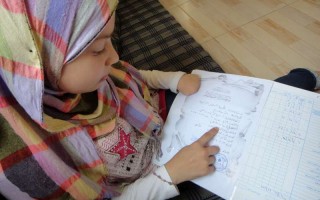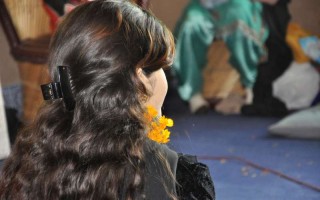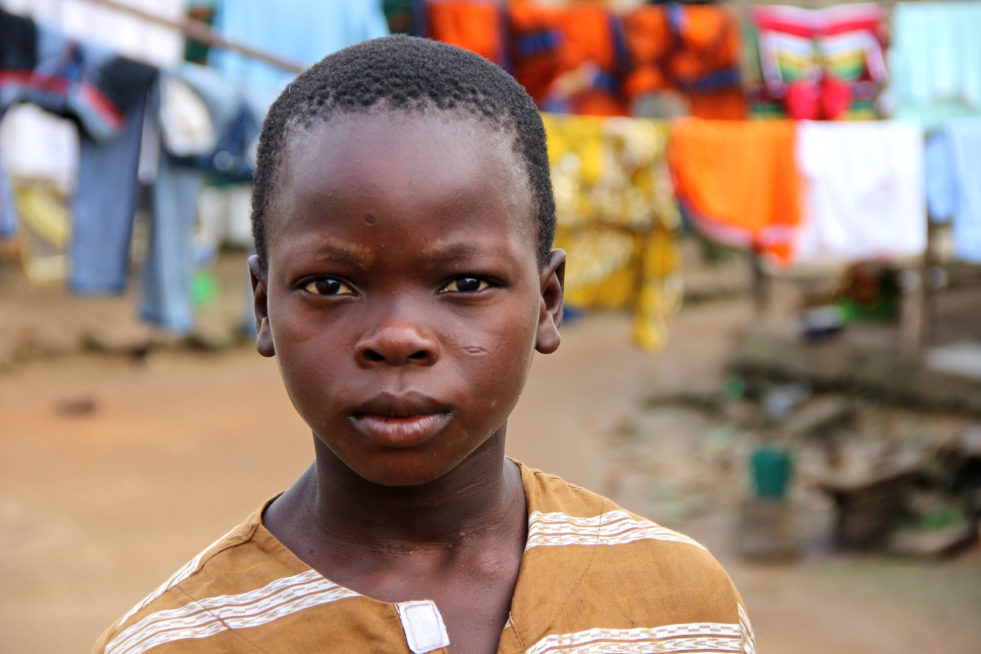
“I do not know who my parents are. I do not remember who they are”. Issa was abandoned when he was very young, like many refugee children. He has no identity papers that show where he is from or who his parents are. UNHCR/Arnaud Froger
Approximately half of the world’s refugees are children. The international community must act quickly to protect the millions of young people whose lives have been brutally interrupted by conflict.
As of 2016, 65.3 million people around the world have been forced to flee their homes. This includes an unprecedented 21.3 million refugees, over half of whom are children.
“Children, including refugee children, are the future. They need special protection and care to realize their potential.”
– UNHCR, Policy on Refugee Children
The UN Policy on Refugee Children defines a ‘child’ as a person under 18 years of age. Worldwide, this group shares a unique feature: they are developing, not just psychologically and physically, but intellectually, culturally, and socially. This process can’t be put on hold—it doesn’t pause during the months or years child refugees spend far from home in some of the world’s most challenging circumstances.
It is vitally important to ensure not only that refugee children are protected from harm, but that they are able to grow up in a happy and healthy way.
Will You Stand #WithRefugees?
Help us to protect vulnerable young people worldwide.
To learn more about our work with youth ages 15-24, read the “We Believe in Youth” Global Youth Refugee Consultation 2016 Report.
Childhood, Interrupted
The risks to which child refugees are exposed occur at three different stages:
- while in their country of origin;
- during the flight to safety; and
- when having to settle in a country of refuge (The Mental Health of Refugee Children, Fazel & Stein, 2002).
In Jordan, UN researchers found that one in four Syrian refugee children have experienced a death or ‘disappearance’ in their immediate family (The Future of Syria: Refugee Children in Crisis).
Many refugees are forced to flee at short notice, leaving them vulnerable to malnutrition, extreme temperatures, and dangerous environments.
“To escape, we had to walk for four days with no food or water.”
– 14 year old South Sudanese refugee.
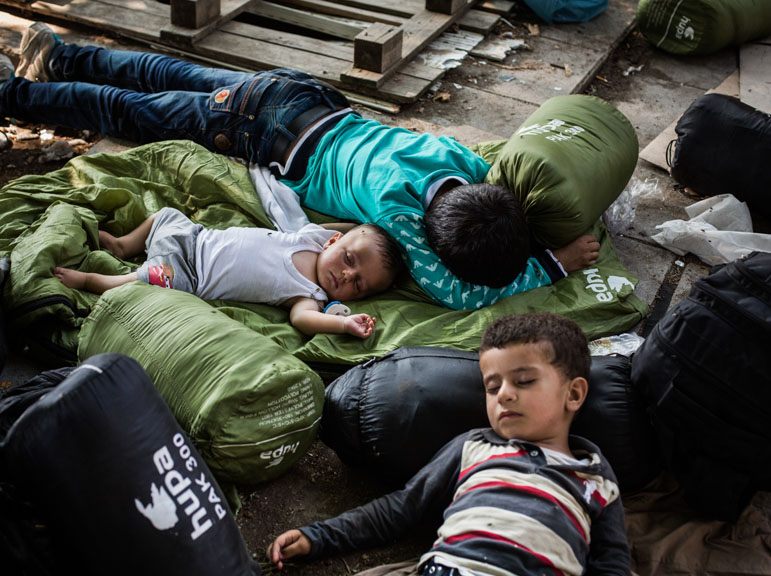
Former Yugoslav Republic of Macedonia. Syrian refugees rest after fleeing violence and persecution in the city of Kobane, besieged by ISIS in 2014.
Refugee girls can be even more vulnerable than their male counterparts, and are subjected to sexual abuse and assault in greater numbers. Refugees arriving in Uganda from South Sudan are disproportionately young and female, with around 90 per cent of new arrivals being women or children under the age of 18.
Life for Child Refugees
These traumatic experiences can have long lasting psychological implications. Child refugees are likely to suffer from post-traumatic stress disorder, depression, and anxiety disorder, and may present a number of symptoms that worsen depending on the stresses they have suffered (Fazel & Stein, 2002).
Sleep disturbances are common, as Swedish photojournalist Magnus Wennman found in his powerful exhibition Where The Children Sleep.
One girl was afraid of resting her head on the pillow because nighttime in Syria was so horrible – that’s when the attacks happened.” – Magnus Wennman
Addressing psychological disorders is vital to the emotional and cognitive development of refugee children, and must be addressed alongside considerations of physical health.
Infectious diseases, malnutrition, malaria, and tuberculosis are common among refugee children (Displaced and Forgotten Child Refugees: A Humanitarian Crisis, Murray, 2015). Health checks, food aid, and basic sanitation are critical to protect vulnerable young people and promote healthy development.
Thanks to the generosity of donors, food aid has been provided for millions of refugees.
Learn more about UNHCR’s lifesaving work
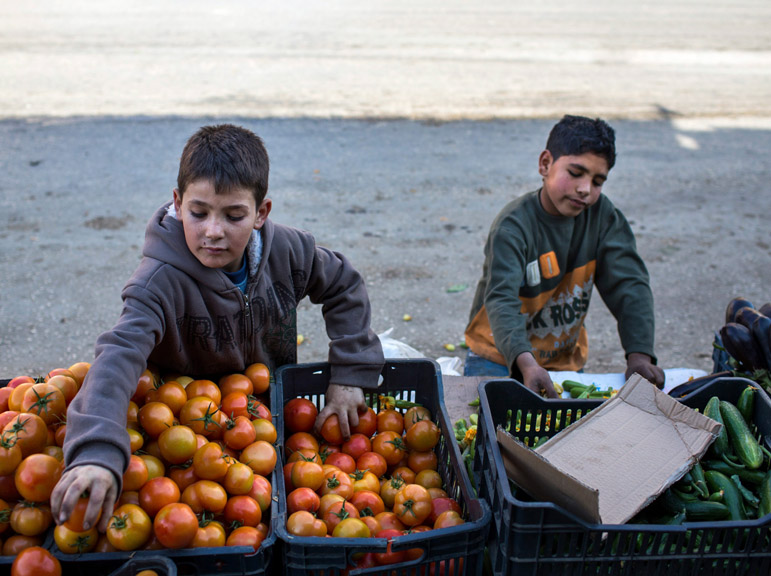
Syrian refugees Talal Louai, 11, and Anaz Ezza, 12, sort vegetables at a grovery store in Bebnine, Lebanon. Some 80% of Syrian children are not in school and many, especially boys, must take jobs to provide for their families.
Normal emotional development can also be disrupted when a young person needs to take on adult responsibilities. In many cases, child refugees (especially boys) are required to work in order to support their families—often as the sole breadwinner.
It is estimated that one in ten Syrian children is engaged in child labour, and this is one of the most complex and widespread child protection problems. Find out how UNHCR is addressing this challenge in The Future of Syria: Children at Work.
The Importance of Education
Education is vitally important for the healthy development of child refugees. Not only does a formal education bring better job prospects and hope for a brighter future, but the learning, play and social interactions that come from attending school contribute to emotional resilience, self confidence, and sense of worth.
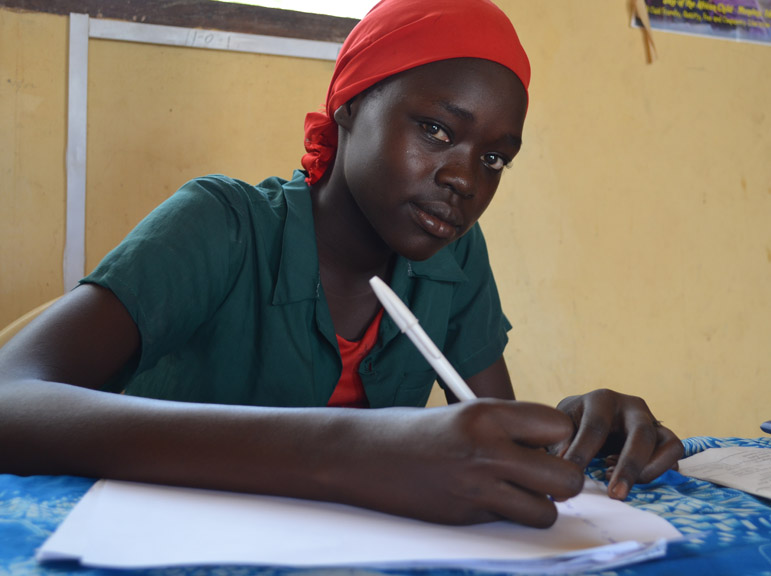
Aletho, 14, is an Ethiopian refugee living in Dadaab refugee camp, Kenya. She dreams of becoming a reporter. Dadaab refugee camp hosts more than 340,000 people.
“Refugees have skills, ideas, hopes and dreams… They are also tough, resilient and creative, with the energy and drive to shape their own destinies, given the chance.”
– UN High Commissioner for Refugees Filippo Grandi
Access to education is at the heart of UNHCR’s mandate, and central to providing long-term solutions to help refugees build a better future. However, refugee children are 5 times more likely to be out of school (Missing Out: Refugee Education in Crisis).
It is imperative that more be done to support educational programs for child refugees—not only to ensure that vulnerable young people are able to live with dignity, but in hope of a better future for all.
“I urge our leaders to put those most affected — girls and boys — at the heart of substantive commitments. Refugee children have the potential to help rebuild safe, peaceful, prosperous countries, but they can’t do this without education.” – Malala Yousafzai
Join UNHCR & Protect Child Refugees
UNHCR works with national authorities and other international and local organisations to assist, protect and find solutions for displaced children.
Together, We Can Make A Difference: Donate Now
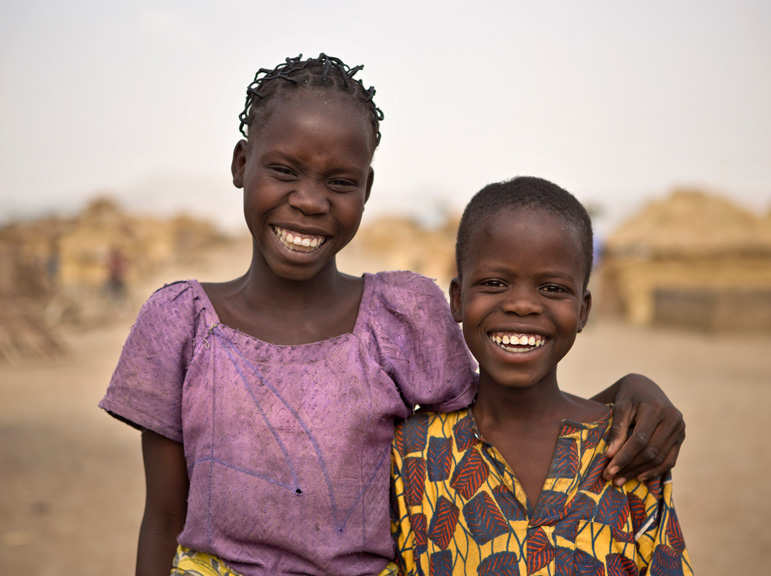
Cameroon. Nigerian refugees and siblings Larama and Ibrahim. UNHCR, the UN Refugee Agency has become increasingly alarmed at the unfolding situation in northeast Nigeria.
Learn More
Read our best practice policy: Refugee Children: Guidelines On Protection and Care.
In 2011, UNHCR issued three global strategies on the Protection of Children, Education and prevention and response to Sexual and Gender-Based Violence (SGBV). Read the Implementation Report 2015 to learn about progress so far.



